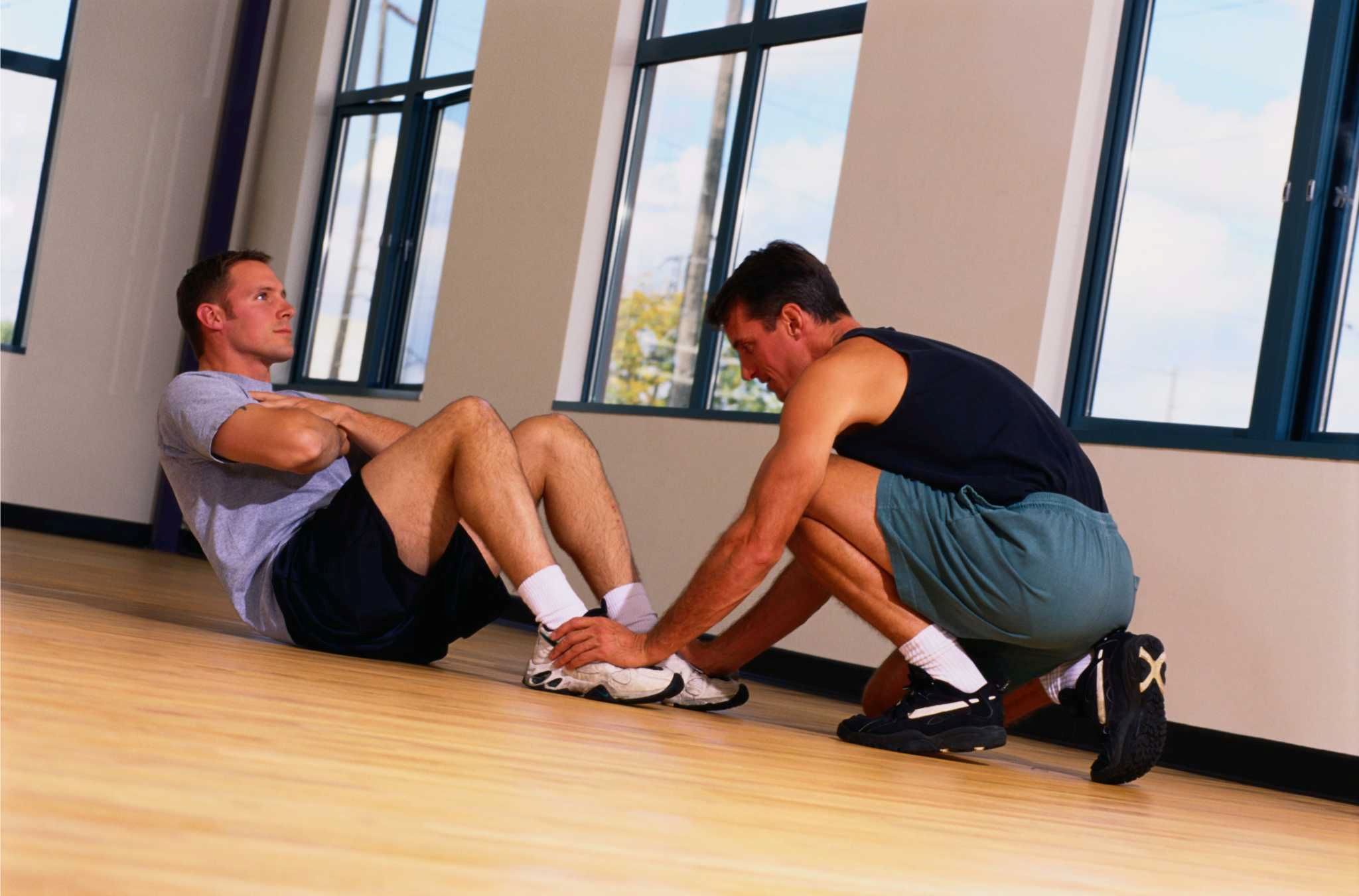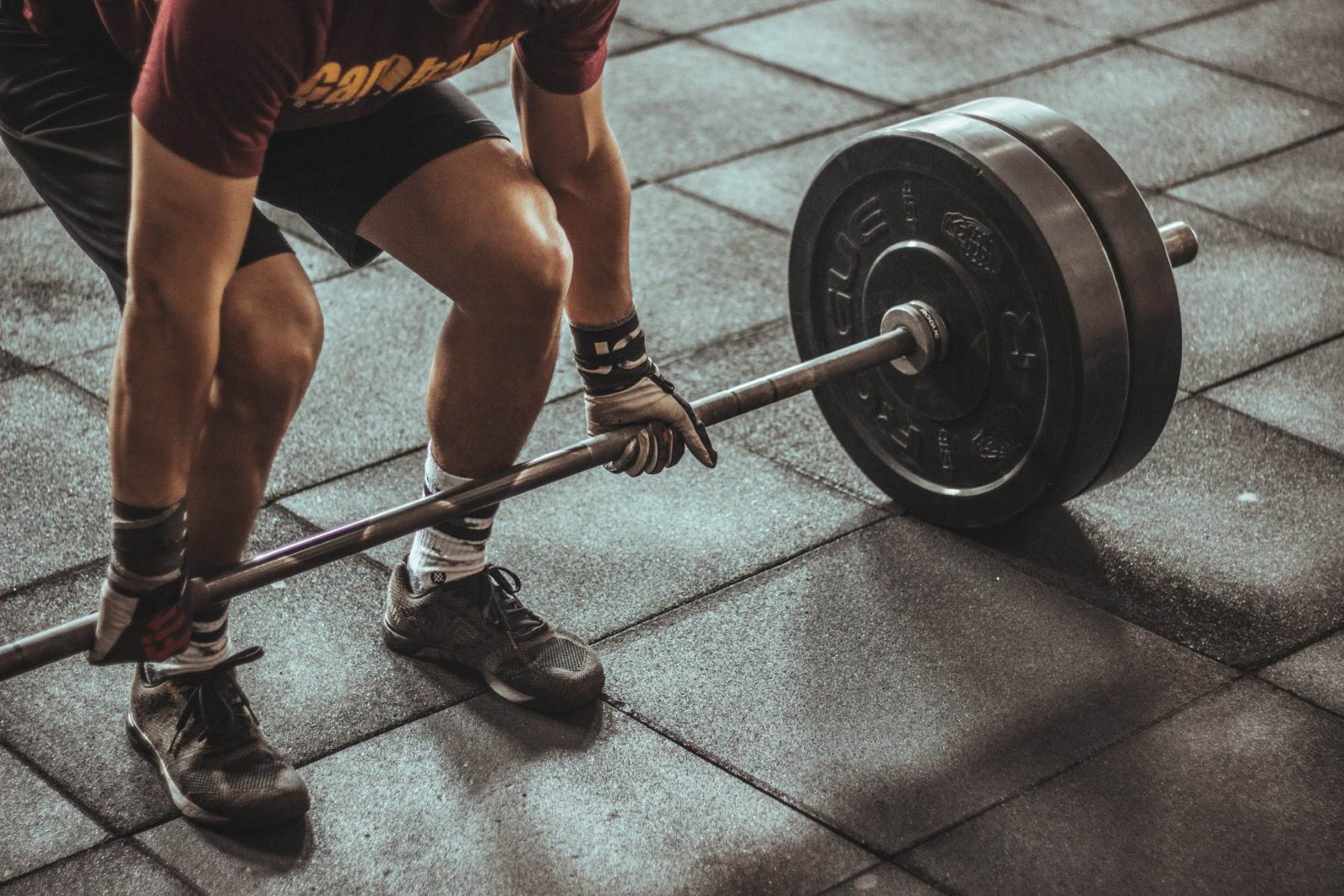Home>Misc>Featured>Which Of The Following Activities Is Most Likely To Improve Muscular Endurance?


Featured
Which Of The Following Activities Is Most Likely To Improve Muscular Endurance?
Modified: January 2, 2024
Improve muscular endurance with featured activities. Discover which activity is most likely to enhance your strength and stamina.
Introduction
Muscular endurance refers to the ability of a muscle or group of muscles to sustain repeated contractions over an extended period of time. It is an essential component of overall fitness and plays a crucial role in various activities, from everyday tasks to sports performance.
Having good muscular endurance can enhance your overall physical performance and allow you to engage in activities for longer durations without experiencing undue fatigue. It also contributes to better posture, joint stability, and injury prevention.
Incorporating activities that specifically target and improve muscular endurance is crucial for individuals looking to enhance their fitness levels or performance in sports and other physical activities.
In this article, we will explore different activities that are known to be effective in improving muscular endurance. Whether you’re a beginner starting your fitness journey or an experienced athlete looking to take your endurance to the next level, these activities can help you build strength and stamina.
It is important to note that muscular endurance training is not just for bodybuilders or athletes; it is beneficial for individuals of all fitness levels and ages. By improving your muscular endurance, you can perform everyday tasks with ease, enhance your overall health, and improve your quality of life.
Definition of Muscular Endurance
Muscular endurance is a term used to describe the ability of a muscle or group of muscles to repeatedly exert force or maintain a muscle contraction over an extended period of time. It is one of the main components of muscular fitness and is closely related to cardiovascular endurance.
Unlike muscular strength, which refers to the maximal amount of force a muscle can generate in a single contraction, muscular endurance focuses on the ability to sustain submaximal contractions for a prolonged period.
Muscular endurance can be measured and assessed in various ways, such as performing exercises that involve repetitive muscle contractions, like push-ups or sit-ups, for a specific time or number of repetitions. It can also be evaluated through tests like the plank hold, where the individual aims to maintain a static position for as long as possible.
Improving muscular endurance requires the muscles to adapt to the demands placed upon them. This adaptation process involves physiological changes within the muscle fibers, including an increase in the number of mitochondria, improved oxygen delivery, enhanced muscle fiber recruitment patterns, and increased resistance to fatigue.
Developing muscular endurance is crucial in various areas of life, including sports performance, daily activities, and injury prevention. Whether you’re an athlete looking to improve your endurance on the field or an individual aiming to enhance your ability to perform everyday tasks, focusing on developing muscular endurance can have a significant impact on your overall fitness and well-being.
By engaging in regular exercises and activities that target the specific muscles’ endurance, you can gradually improve your muscular endurance levels, allowing you to perform tasks and activities with less fatigue and greater efficiency.
Importance of Muscular Endurance
Muscular endurance plays a crucial role in overall fitness and has several important benefits. Here are some reasons why developing muscular endurance is essential:
- Enhanced performance: Improving muscular endurance can significantly enhance your performance in various physical activities and sports. Whether you’re running a marathon, playing soccer, or even performing daily tasks like carrying groceries or climbing stairs, having good muscular endurance allows you to sustain effort for longer periods without getting fatigued.
- Injury prevention: Muscular endurance is closely linked to joint stability and proper muscle function. By improving the endurance of your muscles, you can better support your joints and reduce the risk of injuries. This is particularly important for activities that involve repetitive movements or high-impact exercises.
- Improved overall fitness: Muscular endurance training helps to improve overall fitness levels. As your muscles become more efficient at performing repetitive contractions, your cardiovascular system also becomes more efficient at supplying oxygen and nutrients to the working muscles. This leads to improved cardiovascular endurance, which is essential for activities that require sustained effort.
- Enhanced postural strength and stability: Muscular endurance training helps to improve postural strength and stability. Weak muscles can contribute to poor posture, which can lead to musculoskeletal imbalances and discomfort. By strengthening the muscles responsible for maintaining proper posture, you can improve your overall alignment and reduce the risk of postural issues.
- Increased energy expenditure: Muscular endurance exercises, especially those that involve larger muscle groups, can significantly increase calorie expenditure. This can be beneficial for individuals aiming to lose weight or maintain a healthy body composition. Additionally, the increased metabolic demands of muscular endurance training can lead to improved metabolism, even at rest.
- Functional fitness: Muscular endurance is a key component of functional fitness, which refers to the ability to perform everyday tasks with ease. Whether it’s carrying groceries, lifting objects, or performing household chores, having good muscular endurance allows you to complete these activities without excessive fatigue or risk of injury.
Therefore, incorporating activities that enhance muscular endurance into your fitness routine can have a significant impact on your overall well-being, performance, and quality of life.
Activities for Improving Muscular Endurance
Improving muscular endurance requires specific exercises and activities that target the muscles’ ability to sustain repeated contractions over time. Here are some effective activities that can help you enhance your muscular endurance:
- Cardiorespiratory exercises: Engaging in cardio exercises such as running, cycling, swimming, or rowing can improve both cardiovascular and muscular endurance. These activities increase heart rate and breathing rate, challenging the muscles to sustain contractions while delivering oxygen and nutrients to the working muscles.
- Resistance training: Incorporating resistance training exercises is crucial for improving muscular endurance. Performing low-weight, high-repetition exercises such as bodyweight squats, lunges, push-ups, and tricep dips can target specific muscle groups and challenge their endurance capacity.
- Circuit training: Circuit training involves performing a series of exercises in quick succession, targeting different muscle groups. This type of training challenges the muscles to maintain repetitive movements and allows for efficient use of time. It can include a combination of cardiovascular exercises, resistance exercises, and bodyweight exercises.
- High-Intensity Interval Training (HIIT): HIIT workouts involve short bursts of intense exercises followed by recovery periods. This type of training can improve both cardiovascular and muscular endurance by challenging the muscles to work at high intensities for short durations, followed by brief recovery periods to boost stamina and endurance capacity.
- Bodyweight exercises: Bodyweight exercises are an excellent way to improve muscular endurance as they utilize your body weight as resistance. Exercises such as burpees, mountain climbers, planks, and squat jumps challenge multiple muscle groups simultaneously, improving overall endurance.
When incorporating activities to improve muscular endurance, it’s important to gradually increase intensity, duration, or repetitions over time. This gradual progression allows the muscles to adapt and develop greater endurance capacity. Additionally, proper form and technique should be maintained to ensure optimal muscle engagement and minimize the risk of injuries.
Remember, the key to improving muscular endurance is consistency and progressive overload. By consistently incorporating these activities into your fitness routine and challenging yourself to gradually increase the intensity, you can steadily improve your muscular endurance over time.
Cardiorespiratory Exercises
Cardiorespiratory exercises, also known as cardiovascular or aerobic exercises, are activities that involve continuous movement and elevate the heart rate. These exercises are excellent for improving both cardiovascular fitness and muscular endurance. Here are some popular cardiorespiratory exercises:
- Running/jogging: Running or jogging is a simple yet effective way to improve muscular endurance. It can be done anywhere and requires minimal equipment. Gradually increasing your running distance or incorporating intervals can help challenge your muscles and improve endurance.
- Cycling: Cycling, whether it’s outdoor biking or using a stationary bike, is a low-impact exercise that targets the lower body muscles, including the quadriceps, hamstrings, and calves. Cycling at a moderate to high intensity for an extended period can help improve muscular endurance in these muscle groups.
- Swimming: Swimming is a full-body workout that engages multiple muscle groups simultaneously. The resistance from the water adds an additional challenge, making swimming an excellent cardiorespiratory exercise for improving overall endurance.
- Rowing: Rowing is a total body exercise that engages both the upper and lower body muscles. It is a great option for improving muscular endurance, as it requires sustained effort and coordination between the arms, legs, and core muscles.
- Jumping rope: Jumping rope is a simple yet effective cardio exercise that can be done anywhere. It targets the calves, quadriceps, and shoulders, and challenges the muscles to sustain repetitive jumping motions. Increasing the speed and duration of jumping rope can help improve muscular endurance.
When performing cardiorespiratory exercises, it’s important to maintain proper form and technique to maximize muscle engagement and minimize the risk of injury. It’s also advisable to gradually increase the duration or intensity of the exercises over time to continually challenge your muscles and improve endurance.
Incorporating cardiorespiratory exercises into your fitness routine at least three to five times a week can lead to significant improvements in both cardiovascular fitness and muscular endurance. Whether you choose running, cycling, swimming, rowing, or jumping rope, these exercises will help boost your endurance levels and improve overall fitness.
Resistance Training
Resistance training involves using external resistance, such as free weights, resistance bands, or weight machines, to challenge the muscles and promote strength and endurance. It is a highly effective method for improving muscular endurance, as it targets specific muscle groups and allows for progressive overload. Here are some key points about resistance training for improving muscular endurance:
- Low weight, high repetition: When focusing on muscular endurance, it is recommended to use relatively lighter weights and perform a higher number of repetitions. This approach helps to target the slow-twitch muscle fibers, which are responsible for sustaining contractions over a longer duration.
- Compound exercises: Compound exercises involve multiple muscle groups and joints, providing an efficient way to improve muscular endurance. Examples of compound exercises include squats, lunges, deadlifts, bench presses, and shoulder presses. These exercises engage multiple muscles simultaneously, challenging endurance and promoting functional strength.
- Supersets and circuits: Incorporating supersets or circuit training into your resistance training routine can further enhance muscular endurance. Supersets involve alternating between two different exercises targeting different muscle groups with minimal rest in between. Circuits involve performing a series of exercises one after another without rest. These techniques increase the overall workload and challenge the muscles to sustain contractions for an extended period of time.
- Progressive overload: To continue improving muscular endurance, it’s important to gradually increase the intensity, volume, or complexity of your resistance training workouts. This can be achieved by adding more repetitions, increasing the resistance, or incorporating more challenging variations of exercises.
- Proper form and technique: Maintaining proper form and technique during resistance training exercises is essential for maximizing muscle engagement and reducing the risk of injury. It’s important to focus on controlled movements, maintain good posture, and use a full range of motion for each exercise.
Remember, consistency and progressive overload are key when it comes to resistance training for improving muscular endurance. Aim to perform resistance training exercises at least two to three times per week, focusing on different muscle groups each session. By gradually increasing the intensity and challenging your muscles over time, you can effectively improve muscular endurance and overall strength.
Circuit Training
Circuit training is a highly effective and time-efficient method of training that combines cardiovascular exercises and strength exercises into a series of stations or stations. This form of training challenges both cardiovascular endurance and muscular endurance. Here are some key points about circuit training:
- Multiple exercises: Circuit training involves performing a series of exercises, typically 8 to 12, in a specific order. Each exercise is performed for a set amount of time or a specific number of repetitions before moving on to the next exercise.
- Varied intensity: Circuit training can be designed to target specific muscle groups or provide a full-body workout. It can be adjusted to suit different fitness levels by modifying the intensity, duration, or difficulty of each exercise.
- Effective use of time: Circuit training is known for its time efficiency. By combining cardio and strength exercises into one workout, you can maximize calorie burn, improve cardiovascular endurance, and build muscular endurance in a short amount of time.
- Adaptable to different equipment: Circuit training can be done using various types of equipment or even just bodyweight exercises. Whether you have access to a fully equipped gym or prefer working out at home, circuit training can be customized to fit your resources and preferences.
- Adjustable rest periods: Rest periods between exercises in circuit training can be adjusted to challenge the muscles and promote endurance. Shorter rest periods increase the cardiovascular demand and keep the muscles engaged, while longer rest periods allow for partial recovery before moving on to the next exercise.
When designing a circuit training workout, it’s important to consider the exercises’ order to allow for adequate recovery between muscle groups. Alternating between upper body and lower body exercises, or between pushing and pulling exercises, can help prevent muscle fatigue and optimize the overall workout.
Circuit training is a versatile training method that can be tailored to individual fitness goals and preferences. Whether your aim is to improve overall fitness, build muscular endurance, or burn calories, incorporating circuit training into your routine can provide a challenging and effective workout.
Remember to start with a warm-up before performing the circuit and to cool down and stretch afterward to aid in muscle recovery and flexibility. With consistency and progressive overload, circuit training can help you improve both your cardiovascular and muscular endurance over time.
High-Intensity Interval Training (HIIT)
High-Intensity Interval Training (HIIT) is a popular and effective workout method that alternates between short bursts of intense exercise and periods of active recovery. This form of training is known for its ability to boost cardiovascular fitness and improve muscular endurance. Here are some important points about HIIT:
- Short, intense bursts: HIIT workouts involve performing exercises at a high intensity for a short period, typically between 20 seconds to 1 minute. These intense bursts challenge the cardiovascular system and engage the muscles, promoting endurance.
- Varying exercise selection: HIIT exercises can include a wide range of activities, such as bodyweight exercises, plyometrics, cardio exercises, or even weightlifting movements. This variety allows for targeting different muscle groups and keeps the workouts engaging and challenging.
- Active recovery periods: The high-intensity intervals are followed by active recovery periods, where the intensity is lowered, and the muscles have a chance to partially recover. These periods of active recovery help maintain a high level of effort throughout the entire workout.
- Elevated heart rate: HIIT workouts significantly elevate heart rate, leading to improved cardiovascular endurance. The repeated cycle of high-intensity and active recovery periods challenges the heart and trains it to work more efficiently.
- Time-efficient: HIIT workouts are typically shorter in duration compared to traditional steady-state cardio workouts. This makes them a time-efficient option for individuals with busy schedules, who still want to improve their cardiovascular fitness and muscular endurance.
- Metabolic benefits: HIIT workouts have been shown to have metabolic benefits, including increased calorie burn during and after the workout. The intense nature of the exercises leads to an elevated metabolic rate, resulting in continued calorie burning even after the workout is over.
When performing HIIT workouts, it’s important to start with a proper warm-up to prepare the body for the intense exercise. Gradually increase the intensity and duration of the high-intensity intervals over time, as your fitness level improves. It’s also important to listen to your body and choose exercises and intensity levels that are appropriate for your fitness level and any pre-existing conditions.
HIIT workouts can be done using various formats, such as Tabata intervals (20 seconds of work, 10 seconds of rest), Timed intervals (e.g., 30 seconds of work, 15 seconds of rest), or Repetition-based intervals (e.g., 10 repetitions of an exercise, followed by a brief rest period). Experiment with different intervals and exercises to find what works best for you.
Incorporating HIIT workouts into your fitness routine a few times a week can be an effective way to improve both cardiovascular fitness and muscular endurance. Whether you’re performing bodyweight exercises, using kettlebells, or doing sprints, the intense nature of HIIT will challenge your muscles and help you build endurance over time.
Bodyweight Exercises
Bodyweight exercises are a convenient and effective way to improve muscular endurance without the need for any equipment. These exercises utilize your own body weight as resistance, challenging your muscles and promoting endurance. Here are some important aspects of bodyweight exercises:
- Variety of exercises: There is a wide array of bodyweight exercises that target different muscle groups and can be modified to suit various fitness levels. Examples include push-ups, squats, lunges, burpees, planks, and mountain climbers.
- Engagement of multiple muscle groups: Bodyweight exercises often engage multiple muscle groups simultaneously, promoting functional strength and endurance. These compound movements help build overall body stability and muscular endurance.
- No equipment necessary: The beauty of bodyweight exercises is that they can be performed anytime, anywhere, as they don’t require any equipment. This makes them ideal for those who prefer to exercise at home, while traveling, or on a tight budget.
- Progression through variations: As your muscular endurance improves, you can progress bodyweight exercises by increasing the difficulty level. For example, you can perform push-ups on an incline or add variations such as staggered push-ups or plyometric push-ups to challenge your muscles further.
- Modifications for different fitness levels: Bodyweight exercises can be modified to accommodate different fitness levels. For beginners, modified versions or fewer repetitions can be performed, while more advanced individuals can increase the number of repetitions or incorporate advanced variations.
- Circuit-style workouts: Bodyweight exercises can be incorporated into circuit-style workouts to add intensity and promote endurance. Performing a series of bodyweight exercises with minimal rest in between keeps the muscles engaged and challenges their endurance.
When performing bodyweight exercises, it’s essential to maintain proper form and technique to maximize muscle engagement and reduce the risk of injury. Focus on performing the exercises with control, maintaining proper alignment, and using a full range of motion.
For a well-rounded bodyweight workout, include exercises that target different muscle groups, such as upper body, lower body, and core exercises. Design your workout to challenge your muscles and gradually increase the intensity or duration over time to improve muscular endurance.
Whether you’re a beginner or an experienced exerciser, incorporating bodyweight exercises into your fitness routine is a valuable way to build muscular endurance and overall strength. They are versatile, effective, and require minimal space or equipment, making them accessible for everyone.
Conclusion
Muscular endurance is a key aspect of fitness that plays a vital role in various activities and sports. By improving your muscular endurance, you can enhance your performance, prevent injuries, and improve your overall fitness and well-being. In this article, we explored different activities and training methods that can help improve muscular endurance.
Cardiorespiratory exercises such as running, cycling, swimming, rowing, and jumping rope are excellent for improving both cardiovascular fitness and muscular endurance. These exercises challenge your muscles to sustain repetitive contractions while increasing your heart rate and improving oxygen delivery.
Resistance training exercises, such as bodyweight exercises and circuit training, specifically target and challenge your muscles, promoting endurance and strength. Incorporating low-weight, high-repetition exercises, as well as supersets and circuits, can help improve muscular endurance effectively.
High-Intensity Interval Training (HIIT) combines short bursts of intense exercise with active recovery periods, challenging both your cardiovascular system and muscular endurance. HIIT workouts are time-efficient and promote calorie burn even after the workout is over.
Bodyweight exercises, which use your own body weight as resistance, are convenient and effective for improving muscular endurance. With a variety of exercises targeting different muscle groups and modifications for different fitness levels, bodyweight exercises can be performed anywhere, anytime.
Consistency, proper form, and progressive overload are key principles to keep in mind when working on improving muscular endurance. Gradually increasing the intensity, duration, or difficulty of your workouts will lead to steady progress and better endurance capacity over time.
Whether you’re a beginner starting your fitness journey or an experienced athlete looking to enhance your performance, incorporating these activities into your routine can help you build strength, stamina, and endurance. Remember to listen to your body, stay hydrated, and consult with a healthcare professional before starting any new exercise program.
So, what are you waiting for? Start incorporating these activities for improving muscular endurance into your fitness routine and reap the benefits of increased stamina, improved performance, and overall fitness.








